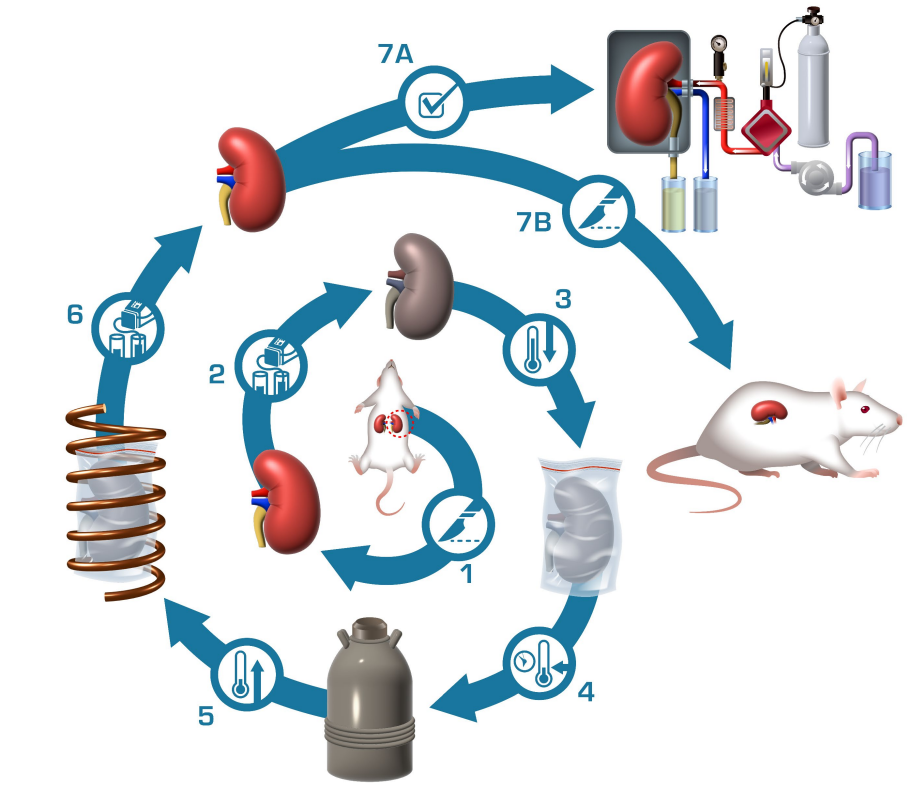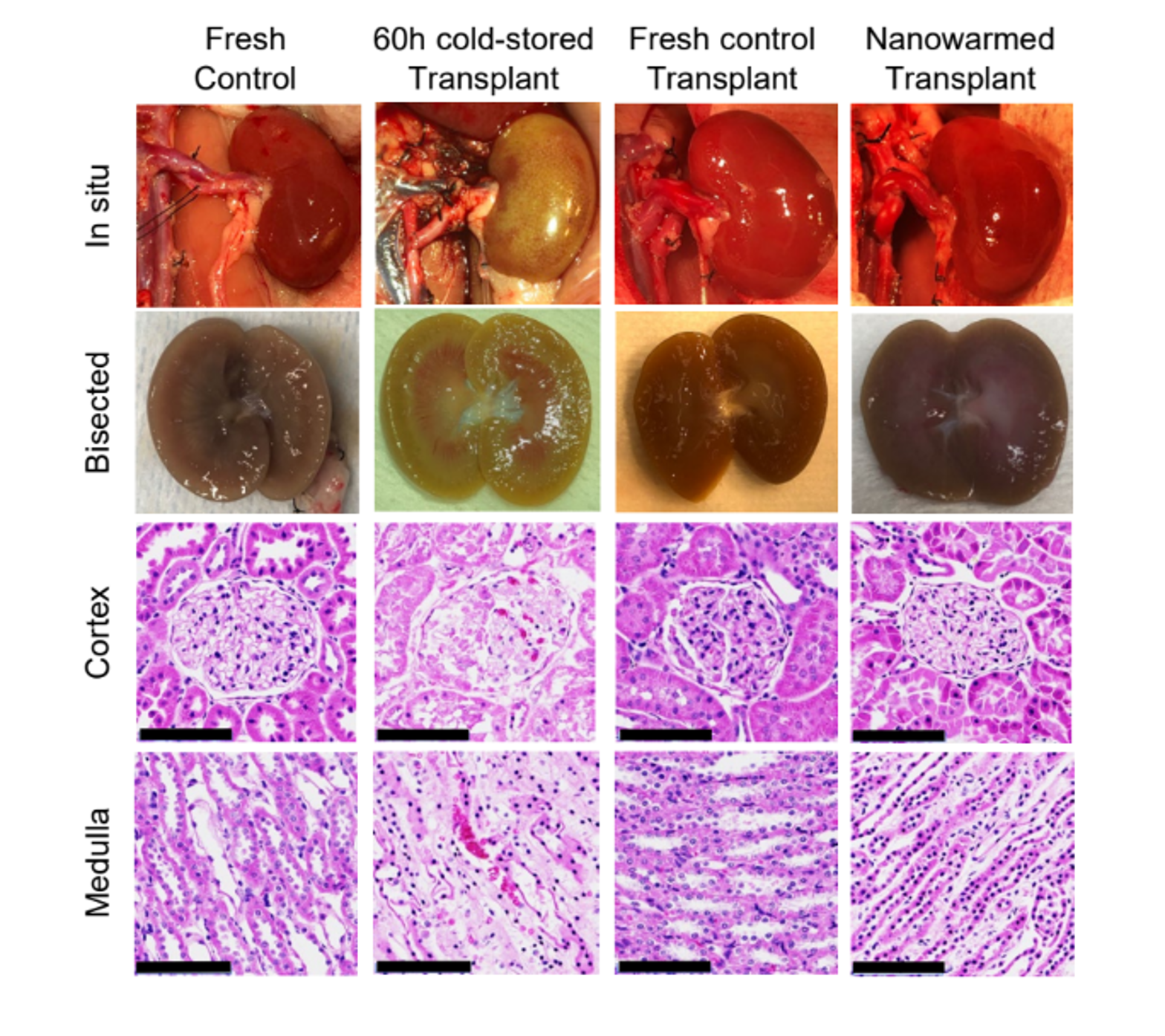Long-term whole organ cryopreservation and transplantation
A method for long-term whole organ cryopreservation and transplantation using vitrification and nanowarming techniques.


Applications
- Organ cryopreservation
- Organ transplantation
Key Benefits & Differentiators
- Extended storage time: This method allows for significantly longer storage times of organs compared to traditional methods
- Improved organ quality: This method preserves the structural integrity and functionality of organs during the cryopreservation process
- Enhanced accessibility and transplantation efficiency: This method can potentially streamline the transplantation process increasing organ utilization rates and improving equitable access to transplantation
Technology Overview
Existing technologies in organ preservation and transplantation suffer from various shortcomings. Conventional methods have limited storage times, leading to organ wastage and logistical complexities. Cryopreservation techniques, although promising, can cause cellular damage due to the formation of ice crystals. Moreover, the shortage of organs and challenges in transportation further complicate the transplantation process. These limitations contribute to disparities in access to transplantation and highlight the need for advancements in cryopreservation technology. By addressing these issues, the field aims to enhance success rates, minimize organ wastage, and improve overall accessibility to life-saving transplantation procedures.
Researchers at the University of Minnesota have developed a new method for long-term whole organ cryopreservation and transplantation using vitrification and nanowarming techniques. This innovative approach eliminates ice crystal formation issues in traditional methods. Vitrification rapidly cools organs to an ice-free, glass-like state, while nanowarming employs magnetic fields for uniform rewarming, preventing thermal stress-induced cracking. Rat kidneys were successfully cryopreserved for up to 100 days using vitrification and recovered through nanowarming for life-sustaining transplantation. The researchers optimized cryoprotective agent loading to ensure successful vitrification with minimal toxicity. Nanowarmed kidneys exhibited normal histology, comparable function to fresh control kidneys, and immediate urine production upon perfusion. They showed superior functional recovery compared to kidneys treated with previous agents. This potentially scalable method holds promise for clinical translation and opens up possibilities for advancements in organ cryopreservation and transplantation, improving outcomes.
Phase of Development
TRL: 4-5This method was successfully demonstrated in the lab. Rat kidneys were cryopreserved for up to 100 days using vitrification, and then recovered through nanowarming, enabling life-sustaining kidney transplantation.
Desired Partnerships
This technology is now available for:- License
- Sponsored research
- Co-development
Please contact our office to share your business’ needs and learn more.
Researchers
- John Bischof, PhD Distinguished McKnight University Professor, Department of Mechanical Engineering
-
expand_more library_books References (1)
- Zonghu Han, Joseph Sushil Rao, Lakshya Gangwar, Bat-Erdene Namsrai, Jacqueline L. Pasek-Allen, Michael L. Etheridge, Susan M. Wolf, Timothy L. Pruett, John C. Bischof, and Erik B. Finger (2023), Vitrification and nanowarming enable long-term organ cryopreservation and life-sustaining kidney transplantation in a rat model, Nature Communications, 14, 3407
-
expand_more cloud_download Supporting documents (1)Product brochureLong-term whole organ cryopreservation and transplantation.pdf